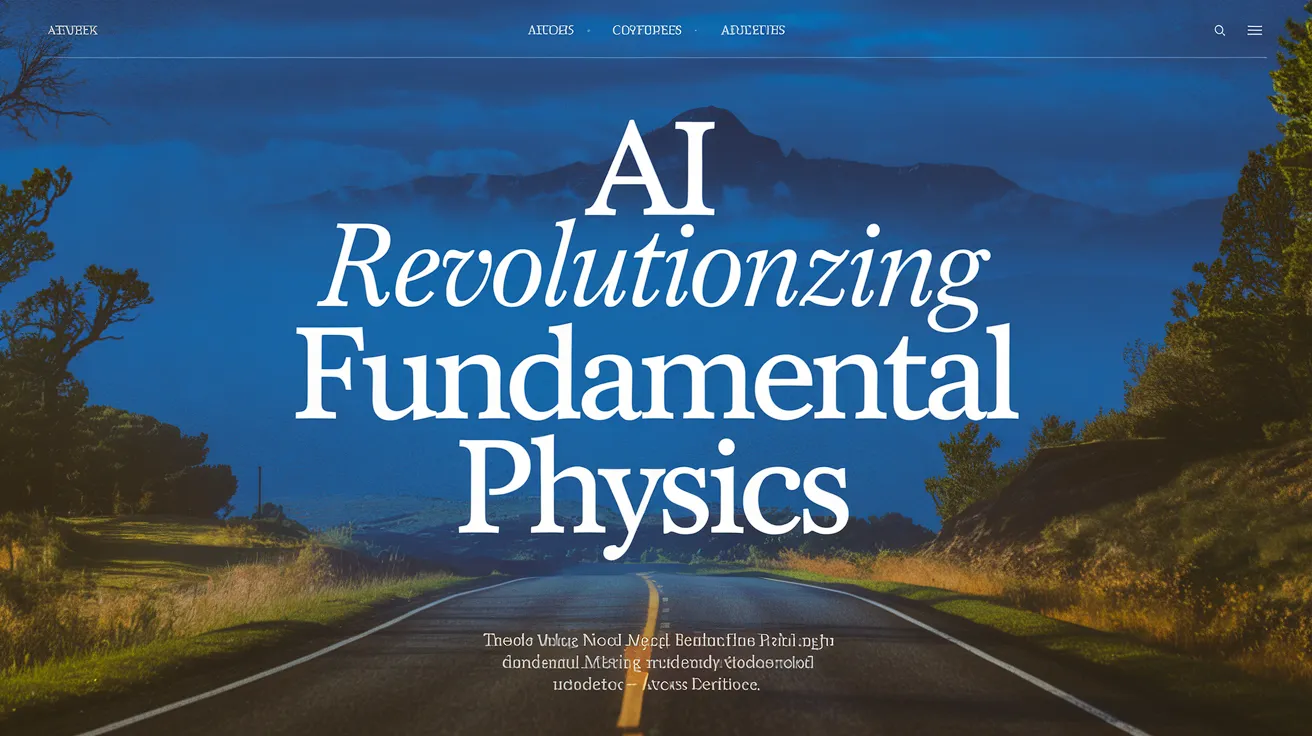AI Revolutionizing Fundamental Physics

Advanced artificial intelligence is set to revolutionize fundamental physics, potentially providing insights on the fate of the universe. According to Prof. Mark Thomson, the next director general of CERN, the application of machine learning techniques promises to lead to significant advancements in particle physics. He draws parallels between these developments and the AI-driven prediction of protein structures that earned Google DeepMind scientists a Nobel Prize in October 2022.
At CERN’s Large Hadron Collider (LHC), similar machine learning methods are being utilized to detect rare events that might illuminate how particles acquired mass shortly after the Big Bang, and to assess whether the universe is at risk of catastrophic collapse. “These are not incremental improvements,” remarked Thomson. He emphasized that the integration of advanced AI methodologies represents a groundbreaking leap in research efficacy and discovery.
Thomson’s insights coincide with CERN’s council advocating for the Future Circular Collider, a proposed 90-kilometer circumference facility set to surpass the LHC in scope and ambition. Despite skepticism surrounding this $17 billion initiative, especially given the LHC’s recent lack of groundbreaking results since the Higgs boson’s discovery in 2012, AI is reigniting the search for new physics on a subatomic scale. Thomson is optimistic that with a significant upgrade boosting the LHC’s beam intensity, groundbreaking discoveries could unfold post-2030.
A focus on the Higgs boson, often called the “God particle”, is central to these advancements. As Thomson highlights, understanding the Higgs self-coupling, a crucial facet of how the Higgs particle provides mass to itself, could redefine our comprehension of the universe’s composition. The complexity involved in producing two Higgs bosons simultaneously has previously led scientists to deem such measurements unattainable. However, with AI’s advancement, Thomson expresses confidence in achieving precise measurements, marking a potential turning point in fundamental physics.
Moreover, this investigation into Higgs self-coupling could open doors to understanding the universe’s fate, including a scenario where the Higgs field undergoes a drastic transition, potentially leading to a swift alteration of the universe as we know it. While Dr. Matthew McCullough from CERN reassures that such a phenomenon is not imminent, the scientific implications of these explorations could be profound.
Thomson notes, “It’s a very deep fundamental property of the universe, one we don’t fully understand… If we saw the Higgs self-coupling being different from our current theory, that would constitute another massive discovery.” The integration of AI into the LHC’s operations, from data collection to interpretation, is reshaping the research landscape. Dr. Katharine Leney, an LHC researcher, mentions the facility’s capability to make 40 million proton collisions per second, necessitating rapid decision-making about which events to study further.
CERN has made significant strides in data analysis, reportedly achieving more with current data than was conceivable a decade ago—a testament to AI’s role in accelerating research. Furthermore, the elusive nature of dark matter, which is hypothesized to make up a large part of the universe, could also benefit from generative AI’s capacity to explore complex and open-ended research questions.
Thomson succinctly captures the transformative potential of AI: “You can start to ask more complex, open-ended questions… rather than searching for a particular signature, you ask the question: ‘Is there something unexpected in this data?'” This approach redefines the paradigm of exploration in fundamental physics and reflects the growing interdependence between AI and scientific inquiry.